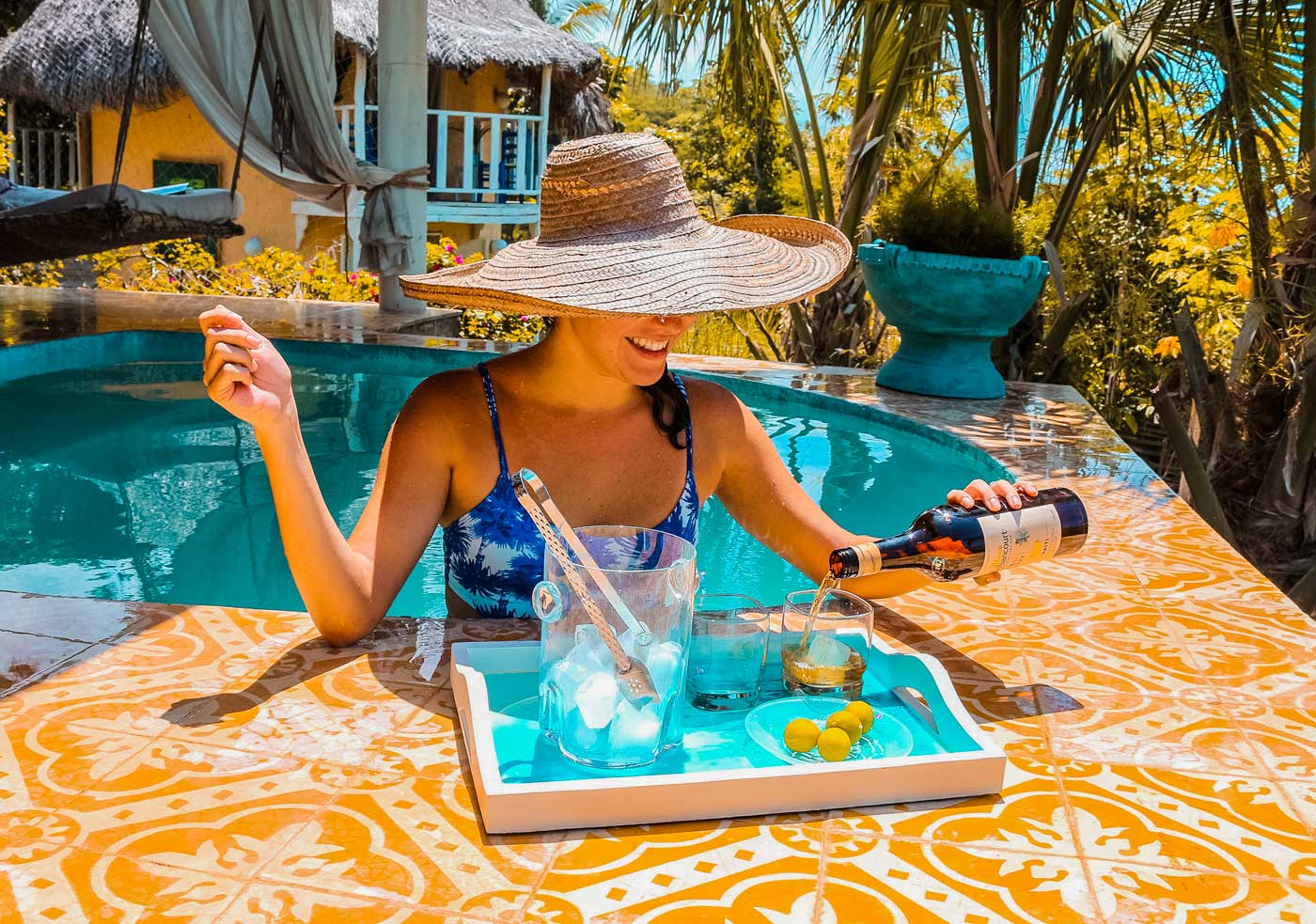
Photo: Amanacer / Emily Bauman
While Barbadians are said to have invented modern rum…
…we think it’s the Haitians who perfected it.
The precursors of rum date back to antiquity. Fermented drinks made from sugarcane juice are believed to have been developed first in ancient China or India before spreading from there.
The first modern rum was distilled in the sugarcane plantations of the Caribbean in the seventeenth century. Plantation slaves discovered that molasses, a by-product of the process of refining sugar from sugarcane, fermented into alcohol. While rum is said to have been invented in Barbados in the early 1600s, the first sugar mills in the Caribbean were established on Hispaniola in 1516, so the concept would have been able to quickly spread throughout what is now known as Haiti.
Here are five tipples to try while vacationing in Haiti.
01. Barbancourt
The classic. Haiti’s most popular rum has been distilled right here on the island for over 150 years, and earned a place in the hearts of Haitians that other brands can only dream of.
From high-end bars and fine-dining restaurants to neighborhood liquor stores, you’ll find Barbancourt everywhere. Barbancourt branding, as well as the drink itself, is splashed around at key cultural events in the capital and at patron saint festivals in the provinces.
Depending on the bar, you can sip up to four varieties of Barbancourt: a young, fresh white rum; the three-star 4yo; the five-star 8yo and the sought-after 15yo estate reserve. Rum connoisseurs rate the 8yo as best value-for-money.
Fancy a between-meals tipple on your private balcony or in your pool? Barbancourt is available at supermarkets, as well as specialty liquor stores such as La Bouteille.
02. Bakara
The second most popular rum in Haiti, Bakara is the drink of choice among Haiti’s younger crowd, not least due to its lower price point compared to Barbancourt. Backpackers on a budget: take note!
As well as being more wallet-friendly, Bakara’s range is more modern – and on the fruity side of things! The brand leans into Haiti’s natural bounty of tropical crops, with evocative Caribbean flavors such as grenadya (passionfruit), kanèl (cinnamon), and lanni (star Anise).
Bakara’s unflavoured standard range spans an 8yo, 12yo and an estate reserve.
It is worth noting that while Bakara is an Haitian brand, the distillery is over in the Domincan Republic, on the eastern half of the island of Hispaniola – though there are plans to start up production in Haiti itself.
03. Vieux Labbé
Produced and bottled in Haiti, Vieux Labbé has carved out a respectable niche for itself. The Vieux Labbé rums share part of their history with the Barbancourt name, but today we know them as standalone brands.
Vieux Labbé has under its wing: a young white rum; a three-star 3yo; a five-star 7yo; a signature blend and a complex 10yo.
04. Boukman
Boukman has made a name for itself in the United States as the first artisanal rhum agricole of its kind, boasting an exotic bouquet of West Indies spices.
What’s Rhum agricole? Unlike the majority of rums in the world, rhum agricole is distilled from fresh sugar cane juice rather than molasses. Starting its life as sugar grown in the cane fields outside Croix-des-Bouquets in Port-au-Prince and in Cap-Haïtien, Boukman boasts a whopping eleven different spices, barks and peels!
The best way to enjoy Boukman rum? Straight – with some ice and an orange twist, at most. If you don’t mind losing some of the complexity of the rum, Boukan is also a delicious way to spice up cocktails!

Photo: Franck Fontain
05. Kleren
No visit to Haiti is complete without a sip of fiery kleren. Also spelled “clairin” by French- and English-speakers, kleren is a quintessentially Caribbean drink and Haiti is its heartland. While there are some 50 kleren distilleries dotted around the rest of the Caribbean, there are over 600 in Haiti alone.
Kleren is a type of rum, not a brand – in fact, it has never been commercially bottled. Instead, it’s made using traditional techniques at artisan distilleries, most of them tiny shacks sprinkled throughout the countryside, producing just enough for the local village.
Like Boukan, kleren is a rhum agricole: processed from sugar cane juice, not molasses, creating a strong, smooth, unmistakable taste – sharp, powerful, to the point.
Kleren is enjoyed in its pure, unaltered state, but you can find flavored varieties as well. When a root or leaf is added to kleren to soak and infuse, the finished product is called tranpe (Haitian Kreyol for “dipped” or “soaked”).
Kleren is a vital element of Haitian culture and you’ll see it for sale by the roadside in gallon bottles. To try kleren for yourself, though, we recommend you visit a neighborhood liquor store – they tend to offer a range to choose from, and smaller bottles.

Photo: MyaBèl
06. Bonus: MyaBèl
In 2012 MyaBèl, an emerging Haitian brand, launched its own ready-to-drink cocktails.
There are currently three cocktails on offer in gorgeous packaging: Tomazo, which is rum, coconut and almond-based; Boukan Bou, which features rum, wild mint and star anise; and La Rat, which is vodka-based rather than rum-based and flavoured with grapefruit and Haitian blackberry.
Written by Kelly Paulemon.
Published August 2019
Top things to see in Haiti

Paradise for your inbox
Your monthly ticket to Haiti awaits! Get first-hand travel tips, the latest news, and inspiring stories delivered straight to your inbox—no spam, just paradise.





